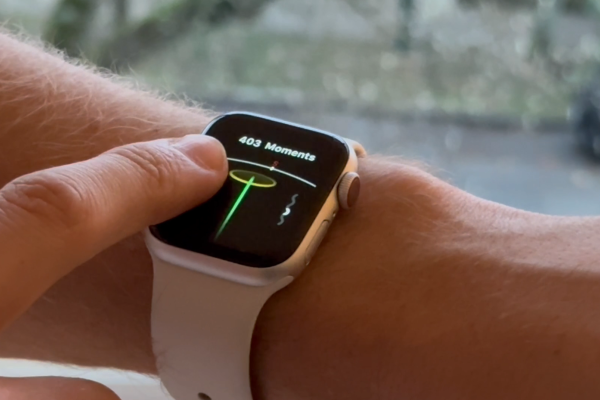Retrieving and Interacting with personal location history data through Memory Compass
Timeframe
2019 ↝ 2023Keywords
- Research Product
- Research Through Design
- Slow Technology
- Metadata
- Interaction Design
- Domestic Technology
- Digital Archives
- Design Theory
Outcome
-
↬
Novel Embodied Interaction Design
-
↬
New tools for working with location history data as a design material
-
↬
Papers at CHI 2023 & DIS 2020
The Core Idea
Memory Compass lets you cast in any desired direction, distance, radius, and year to ‘pull back’ and explore location moments relative to your current geographic location.
Design Process
We began by working with location history data as a material to envision applications that could surface past place you had visited on the geographic horizon or by allowing a user to ‘cast’ out in a certain direction and distance to return the nearest photo in your photo library to that point.
How could location history data be used to design an interactive application that shows location memories in relation to your current location? Through a range of early experiments in working with location history data, we were drawn to different embodied interaction metaphors of fishing, scanning, or casting a net in a direction to capture and bring back geo-locative moments from your past.
We eventually arrived an an initial Memory Compass concept interaction design focuses on four key touchpoints.
The user begins by pointing their wrist in the direction they want to explore and setting the desired distance to "cast." When they cast, Memory Compass identifies all moments within a 10% radius of the casted point. For example, casting at 94°E for 300 miles will locate the point 300 miles away and retrieve all moments within a 30-mile radius. The farther the cast, the greater the likelihood of no moments being returned, prompting the user to try again until a successful cast is made. If multiple moments are found, one is selected at random. Once a moment is retrieved, the user can scroll through details such as the time, city, location name, activity, and a map.
We created several UI design alternatives and tested the experience using Jordan's location data with Python, SQLite, and Apple Maps. The Python script used our program to cast a location and open Apple Maps, dropping a pin at the specified point. This allowed us to evaluate whether viewing a past pin in relation to one's current location could evoke reminiscence, which it successfully did.
The final version of Memory Compass used abstracted visuals to represent precise underlying filter values. The number of moments, displayed at the top, helped attune the user to where they were exploring before casting, giving rise to experiences of anticipation around what moments in space and time from one’s past will be brought back.
Once the filters are adjusted and the cast is ‘launched’, Memory Compass will show a map of where it landed, the radius size, and a pin if it found a moment in this area. The user can Recast or View the moment. Moment details show a closer map, date, time, location name, city, activity (if available), weather, and altitude.
Outcomes & Implications
Memory Compass features a minimal interface, form, and aesthetic, while allowing users to retrieve specific spatial-temporal moments from their past in a geographic and embodied way. It offers a memory-focused approach to exploring geographic space over time, encouraging reflection on the connections between life stages and memories tied to places. As a design case, Memory Compass exemplifies an interaction design strategy that leverages location history data as a resource for exploring, contemplating, and reminiscing about places integral to one’s life story in ways that can grow and evolve over time.
Memory Tracer & Memory Compass: Investigating Personal Location Histories as a Design Material for Everyday Reminiscence
- Jordan White,
- William Odom,
- Nico Brand,
- Ce Zhong
Memory Tracer & Memory Compass: Investigating personal location histories as a design material for everyday reminiscence
- Jordan White
Exploring Location Histories as a Design Material for Reflection with Memory Compass & Memory Tracer
- Jordan White,
- William Odom,
- Nico Brand
Acknowledgments
-
↬
This research is supported by the Natural Sciences and Engineering Research Council of Canada (NSERC), the Social Sciences and Humanities Research Council of Canada (SSHRC), and the Canada Foundation for Innovation (CFI).


